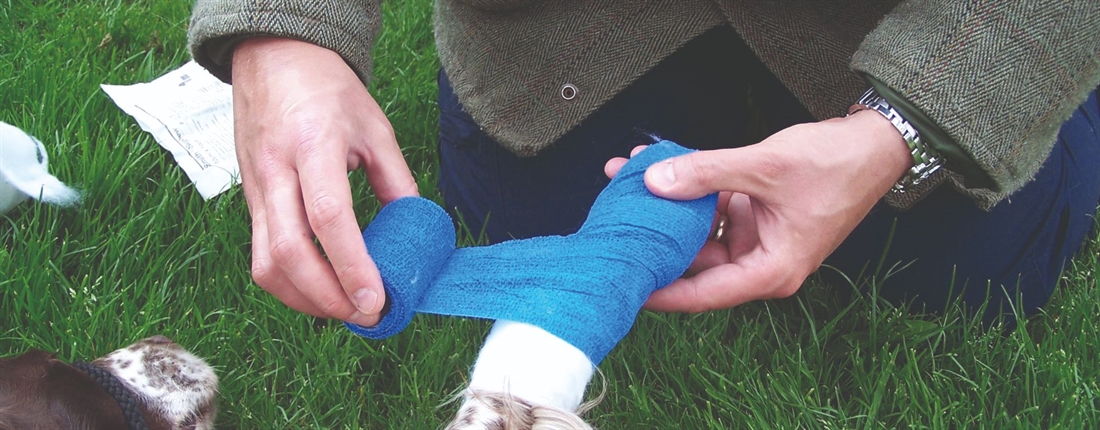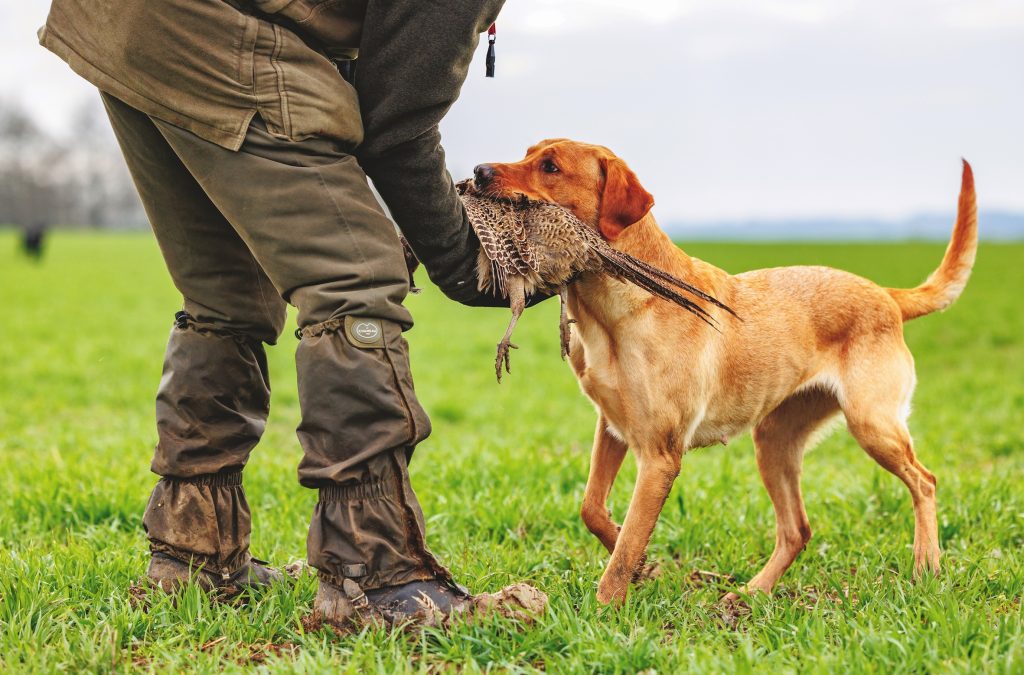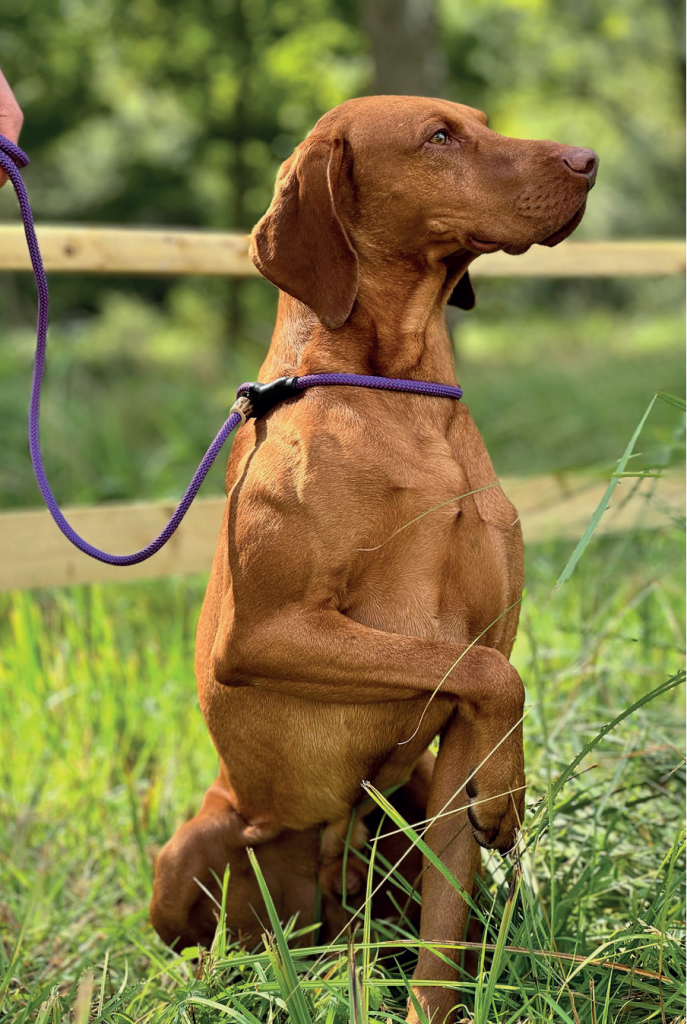First aid in the field
From cuts and eye injuries, to muscle strains and hypothermia, Vicky Payne runs through some common issues in working dogs and how to treat them

Hopefully everyone has managed to get some days out with their dogs on the shoots, even if they have been smaller or less frequent due to bird flu. I started teaching dog first aid to gundog owners after a few close calls with my own rather headstrong first springer, Quincy. It is rare for my team to get through the season without somebody needing my veterinary attention, so it never hurts to review some common shoot day injury risks and what to do about them.
Wounds
Skin tears are the most common injury I see in working gundogs, especially the bramble-bashing spaniels. When the skin is ripped rather than cut there can be minimal bleeding, especially on a cold day, so have a quick check of areas that can be easily damaged such as the armpits, groin and belly after each drive.
If you find a wound, stop working your dog and seek veterinary help for all but the smallest of wounds. Wounds from the field are often contaminated with mud and debris and may need flushing out. If the wound is on the leg or belly, it may be possible to apply a bandage to keep the wound clean and prevent further damage. I am often asked if handlers should carry a skin stapler. These can be used to tack a wound together in the field, but the wound can’t be properly cleaned, and such repairs usually break down.
Eye injuries
Thankfully, these are not as common as you might think for dogs hurtling head-first through cover! If you notice your dog is blinking a lot, is holding the eye closed, or is pawing at the eye, they may have scratched the surface of the cornea. I carry lubricating eyedrops which can give quick relief from dust or grass seeds in the eye, but if irritation continues you may need to see your vet. If the pupils are different sized or something seems stuck in the eye, then that appointment becomes an emergency.
Sprains, strains and broken bones
Sometimes dogs will go lame whilst working; other times they seem fine during the day when the adrenaline is flowing but are lame after rest. Most injuries are muscle damage which will heal with rest and dog-safe anti-inflammatories. See your vet for any lameness which is not improving after a few days. Ligament damage and broken bones can look similar and usually (but not always) the dog will not be able to put their weight on the damaged leg. In most cases it is fine to carry the dog to your vehicle, but if there is an open wound and you suspect a fracture you may need to apply a protective and supportive bandage first.
Collapse
Early in the season, the most common cause of gundog collapse is hyperthermia (overheating). Early signs include the dog reacting sluggishly to commands, a wobbly gait, and panting with a large dark pink tongue. If you stop at this point and cool your dog with running water, they should recover quickly. Offer small drinks of tepid water to avoid your dog vomiting and becoming dehydrated. If heat stress is not treated, it can lead to collapse, fitting and death.
Another common cause of collapse in gundogs is hypoglycaemia, low blood sugar. The symptoms look similar to heat stress, though with less panting. As long as the dog is conscious, they can be offered something to eat. I carry glucose gel in my pocket as the sugar can be absorbed through the gums. Unfortunately, I have had to use this a few times for dogs that just couldn’t pace themselves and ran out of energy. Feeding a small breakfast and giving a dog-safe energy bar at elevenses can help.
Hypothermia
Cold can really sap the energy, and especially if dogs are repeatedly retrieving from icy water they can suffer from hypothermia. I have experienced this with one of my dogs who went from retrieving energetically to just standing still shivering uncontrollably. Getting the dog warm and dry is the key to a speedy recovery and as they will often have low blood sugar too some food will help. Using drying coats between drives and during breaks will help keep them warm and reduce the chances of both chilling and low blood sugar.
Make sure you keep your first aid kit topped up and maybe think about taking a first aid refresher course!





